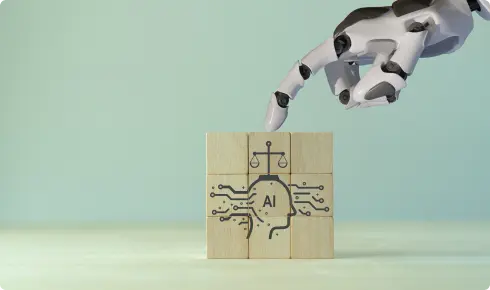How to survive and thrive in a world where nothing feels certain.
In an era shaped by AI, economic instability, and geopolitical shifts, resilience has become essential. Discover the crucial foundations for turning uncertainty into opportunity.
KEY POINTS
- Resilience is essential in an age of economic instability, AI, and global uncertainty.
- Success requires adaptability, strong networks, and emotional strength.
- Use technology to enhance—not replace—human judgment.
Today’s world—shaped by economic instability, artificial intelligence, and geopolitical upheaval—is more unpredictable than ever. This isn’t just change; it’s radical uncertainty, where even defining the unknowns is a challenge.
Our brains naturally crave certainty. Neuroscience shows that facing the unknown can trigger the same pain responses as physical injury. Historically, familiar patterns offered comfort. Now, clinging to outdated assumptions can lead us astray. Seeking more information, building rigid plans, or leaning heavily on expert forecasts often creates a false sense of security—and history proves how fragile this can be, from the COVID-19 pandemic to the rapid acceleration of AI.
True resilience lies not in eliminating uncertainty but in learning how to navigate it wisely.
Building the Foundations of Resilience
To thrive amid uncertainty, individuals and organizations must develop three core capabilities:
- Cognitive flexibility: The ability to pivot thinking and behavior without losing sight of purpose.
- Strategic adaptability: Keeping multiple options open rather than rigidly following a single path.
- Connection: Building strong personal and professional networks that offer support and opportunities when unexpected challenges arise.
Beyond these traits, emotional resilience is crucial. Mindfulness, emotional intelligence, and stress management help people stay focused and make sound decisions under pressure. Organizations that prioritize employee well-being build cultures of resilience that benefit both individuals and the enterprise.
Developing a learning mindset is equally vital. Viewing uncertainty as a chance for growth encourages experimentation, continuous education, and creativity—transforming threats into opportunities.
Leadership and Technology
Leadership plays a decisive role in shaping how uncertainty is experienced. Effective leaders do more than react—they guide with clarity, flexibility, and resilience. Key leadership practices include:
- Communicating transparently: Building trust through openness, even when outcomes remain unclear.
- Modeling adaptability: Demonstrating a willingness to pivot and embrace change.
- Balancing calculated risks with strategic pivots: Moving forward boldly while staying ready to adjust course as realities evolve.
Investing in leadership development—emphasizing emotional resilience, strategic agility, and decision-making under pressure—strengthens an organization’s ability to thrive.
Technology also plays a crucial role in managing uncertainty. AI-driven analytics, real-time modeling, and automation tools offer powerful ways to anticipate and respond to change. Yet new psychological challenges arise:
- Automation anxiety: Fear of losing human agency as technology takes on greater decision-making power.
- Algorithm aversion: Distrust of machine recommendations, even when they are demonstrably effective.
Navigating this terrain requires the ability to leverage technology’s capabilities while maintaining critical thinking, ethical clarity, and human agency.
Technology should not replace human insight; it should amplify it.
Redefining Safety
Resilient individuals and organizations don’t just tolerate uncertainty—they lean into it. The ability to function, and even flourish, within discomfort—what some call “productive discomfort”—is a defining trait of high performers. Those who view uncertainty as fertile ground for growth consistently outperform those who seek only stability.
Modern psychological theory reframes safety: It’s not the absence of threats, but the presence of adaptability. Organizations that build resilience into both their structures and cultures unlock a workforce that doesn’t just withstand disruption but evolves through it.
Creating environments that encourage continuous learning, emotional support, and strategic risk-taking ensures that resilience becomes an organizational muscle, not a reactive response.
Conclusion: Turning Uncertainty Into Opportunity
Uncertainty is no longer a temporary condition; it’s the environment we live in. By cultivating flexibility, emotional resilience, strong relationships, and digital wisdom, individuals and organizations can transform unpredictability from a source of fear into a source of advantage.
[Source Photo: Shutterstock]
A version of this article @ Psychology Today.
















